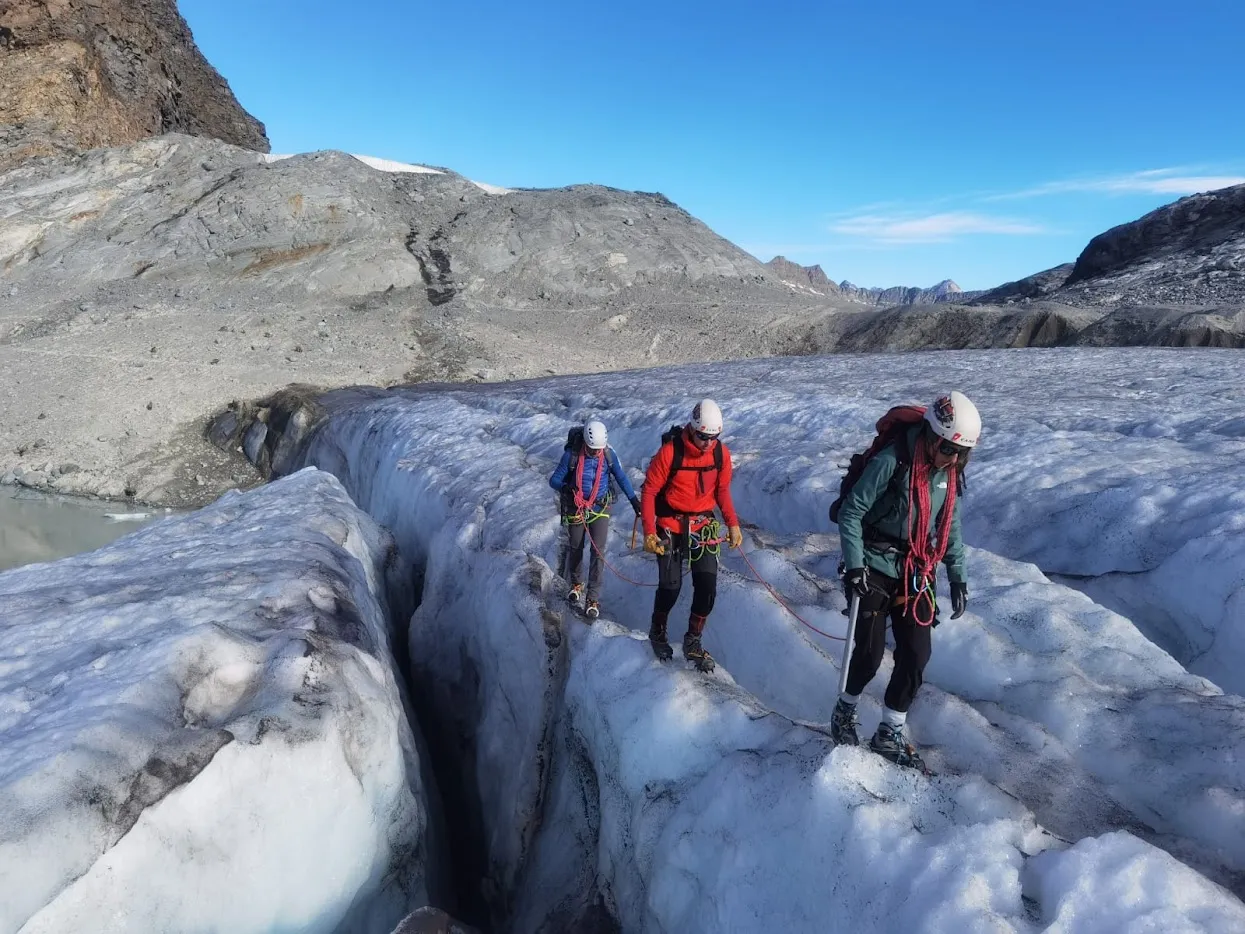Top 5 Best Mountaineering Courses to Start Your Alpine Journey
Discover the 5 best mountaineering courses for beginners: accessible formats, advice on progress and easy summits to aim for after your introduction.

Dreaming of walking roped up on a glacier, climbing your first summit, or crossing a narrow alpine ridge with confidence? Mountaineering can seem intimidating… but with the right guidance, a good location, and a supportive atmosphere, it becomes an accessible and unforgettable adventure.
Here’s our selection of the 5 best mountaineering courses for beginners, tested or recommended by the Wildhartt team. Each one offers a progressive format to learn at your pace, discover essential techniques, and confidently take your first steps in the high mountains.
Top 5 Best Mountaineering Courses to Start Your Alpine Journey
Introductory Course in the Mont-Blanc Range (Chamonix / Argentière)
The Mont-Blanc massif is a classic and it hasn’t lost any of its magic. Crampon use, rope techniques, glacier walking… You’ll learn all the basics with quick access to high alpine terrain thanks to the lift system.
The guides are highly experienced, the infrastructure is excellent, and the landscapes are truly breathtaking. Possible training summits include the Petite Aiguille Verte, Tête Blanche, and the Col du Tour.
Why we love it: easily accessible, comprehensive, and ideal for a first supervised experience.
Wildhartt offers a mountaineering course in the Chamonix Valley. Interested? Click here

Course in the Écrins (La Bérarde, Ailefroide)
Less crowded than Chamonix, the Écrins offer a wilder, more rugged alpine experience. Training routes are often longer, with more elevation gain, but the reward is total immersion.
It’s the perfect terrain for those who enjoy hiking, staying in refuges, and learning through hands-on experience. The atmosphere is authentic, the guides often local, and the technical and human learning curve is strong.
Ideal for: motivated beginners looking for a deep and raw introduction far from the crowds.
Wildhartt also offers a beginner-friendly mountaineering course in the Écrins.

Mountaineering Course in Switzerland – Arolla Region (Val d’Hérens)
Arolla is all the beauty of the Swiss Alps without the tourist hustle. You’ll learn to use crampons, rope up, travel in teams across glaciers, and attempt a first summit. The Pigne d’Arolla is ideal for that.
The setting is spectacular, the refuges cozy, and the progression gentle. It’s also a great way to experience the Swiss guiding style: strict, professional, but highly educational.
Perfect for: a stunning alpine setting with a smooth learning curve.
Weekend Course in the Pyrenees (Gavarnie, Néouvielle)
Want to test the waters without committing to a full week? Go for a shorter format, like a weekend in the Pyrenees. Fewer glaciers here, but rocky ridges, accessible peaks, and great training terrain.
The atmosphere is warm, the refuges welcoming, and the instruction often very local. It’s a perfect entry point to see if alpinism is for you.
Great for: a reassuring, nearby first step into mountaineering.
Mixed Alpinism + Bivouac Course in the Southern Alps (Queyras, Ubaye)
Looking for a full-on, nature-immersive experience that goes beyond the standard course? This one’s for you. In the Queyras or Ubaye, some courses offer a combo of mountaineering training and high-altitude bivouac.
You’ll not only learn technical basics (crampons, rope work, belaying), but also how to move in semi-autonomy: navigation, bivy setup, gear management.
For those who: want to feel truly immersed in the mountains, away from everything.

What Summits to Aim For After Your First Course?
Once you’ve gained confidence with your crampons and rope techniques, you can start aiming for easy beginner peaks to apply your skills. Here are a few iconic and accessible summits perfect for your first independent (or semi-guided) climbs:
- Tête Blanche (Val d’Hérens): a classic glacier route to practice roped glacier travel.
- Aiguille du Tour (3542m): popular but ideal for learning to manage glacier ascents.
- Bishorn (4153m): a beautiful 4000er with a non-technical glacier route.
- Gran Paradiso (4061m): one of the easiest 4000m peaks, with a straightforward glacier ascent.
These routes help reinforce what you’ve learned in your course while giving you a safe way to continue progressing. Plus, the views are unforgettable and will keep you hooked.
How to Choose the Right Mountaineering Course?
A few key questions to guide your choice:
- Your current fitness level: some courses require decent stamina
- Duration: are you looking for a weekend tester or a full week immersion?
- Terrain type: glacier, mixed, rocky, snow?
- Guides: make sure the course is led by a certified IFMGA/UIAGM mountain guide
- Atmosphere: do you want something instructional, challenging, relaxed?
In conclusion
Mountaineering may seem reserved for elite climbers, but it’s more accessible than you think. With the right course, you’ll progress safely, gain confidence, and live a deeply rewarding experience.
At Wildhartt, we believe in a slower, more human approach to the mountains. Our courses are designed for anyone who wants to discover mountaineering not for performance, but for the experience.
These adventures might interest you ...

Mount Rose's 4000-metre peaks

Gran Paradiso: climb your first 4,000-meter peak

Introduction to rock climbing in Belgium

Discover Mountain Climbing in the Chamonix Valley

Mont Blanc mountain climb: A 5-Day guided ascent to the summit
